Playing the blues doesn't have to be hard, in fact it's a lot easier than it looks! In this guitar lesson, we are going to learn how to play a blues shuffle.
Anyone can learn this, and I will show you easily in a step-by-step process just how you can play the blues on guitar. Be sure to stick with this lesson until the end as there are some optional techniques to play this that I think you will really enjoy!
First off, let's start with learning the chords of the blues shuffle.
Chords of the Blues Shuffle
We’re going to be using two notes per chord for this blues shuffle. Even though it’s only two notes per chord, it works quite well because your ear will naturally fill out the missing notes.
We’re going to start with the A chord, where we play just the fifth string (open A) and fourth string second fret with your index finger.
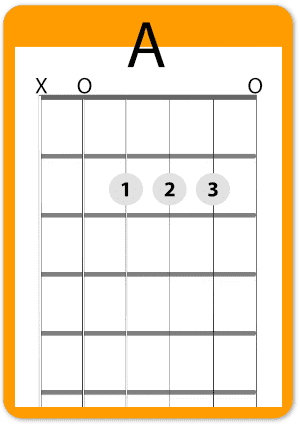
We then move onto the D chord. It features a very similar hand position.
The difference is that for D, we’re going to be playing the open D string (fourth string) and the third string with the index on the second fret (for the note A).
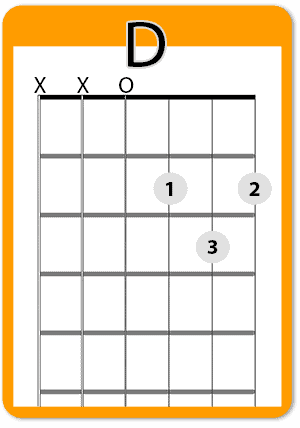
Next up is the E chord. Here we’ll use the open E string (sixth string) with your index finger placed on the second fret of the fifth string (B note).
In other words, all three chords in this blues shuffle feature an open string on the bottom and the index finger on the second fret of the string right below it.
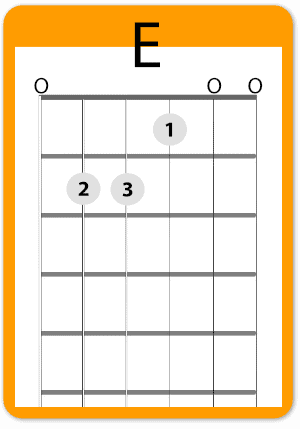
Putting All The Chords Together
Let’s play all of that to complete the 12 bar blues. We start with the A chord for four beats. Next we have D for four beats followed by 8 beats of A chord. We then have 8 beats (or two bars) of D followed by 8 beasts of A.
Then we go to the E chord for 4 beats, E for four beats and A for eight beats. That completes the 12 bar blues form.
Play the entire blues form with just down strokes to mark each beat. Make sure you get a good consistent tone from just the two strings required for each chord.
Learning Shuffle Patterns
Some folks like to count shuffle patterns in three, where you’d hit the strings on 1 and 3, giving it that special feel. What works better for me is to just feel where that shuffle is.
Before playing it, try to tap it on your leg or something similar just to get the feeling going.
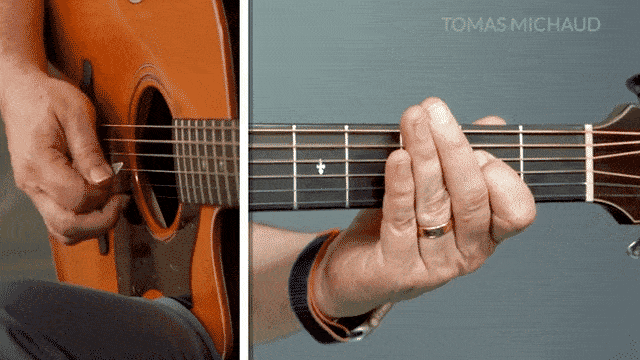
Then try playing the entire blues form with the three chords employing this shuffle pattern. This is also a great opportunity to work on your muting skills, to make sure the strings that are not involved on a given chord remain somewhat silent.
Add a Shuffle With A Lick
We’re going to add an embellishment or lick to spice up that shuffle pattern. We’ll do that by adding the ring finger on the fourth fret for two hits.
For instance, for the A chord, start out with the first two hits on the two strings as we already discussed, and then place the ring finger on the fourth string second fret for the following two hits. Then repeat the entire cycle.
We’re going to apply the same pattern for the D and E chords, with the ring finger on the respective string depending on the chord.
Try Using A Palm Mute
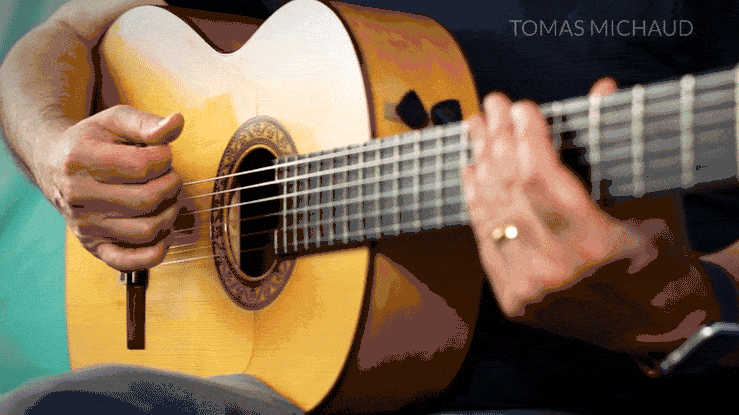
We’re going to add palm muting on the right hand to further give you dynamic options for this shuffle pattern. Do this by gently resting your right hand on the strings.
You can choose the degree to which you mute the strings to create different effects.
This mute technique is essential for electric guitar players but can also be quite useful for acoustic guitar players. Give it a try!
Forming The 12 Bar Blues Shuffle
Let’s put it all together in a 12 bar blues shuffle. As we mentioned above the form is A, D, A, A, D, D, A, A, E, D, A, A.
Each chord lasts one bar (or four beats) to complete the 12 bar blues. You can try to play along with the video I’ve got on YouTube to help you get a grasp on the 12 bar blues form.
Just Keep At It!
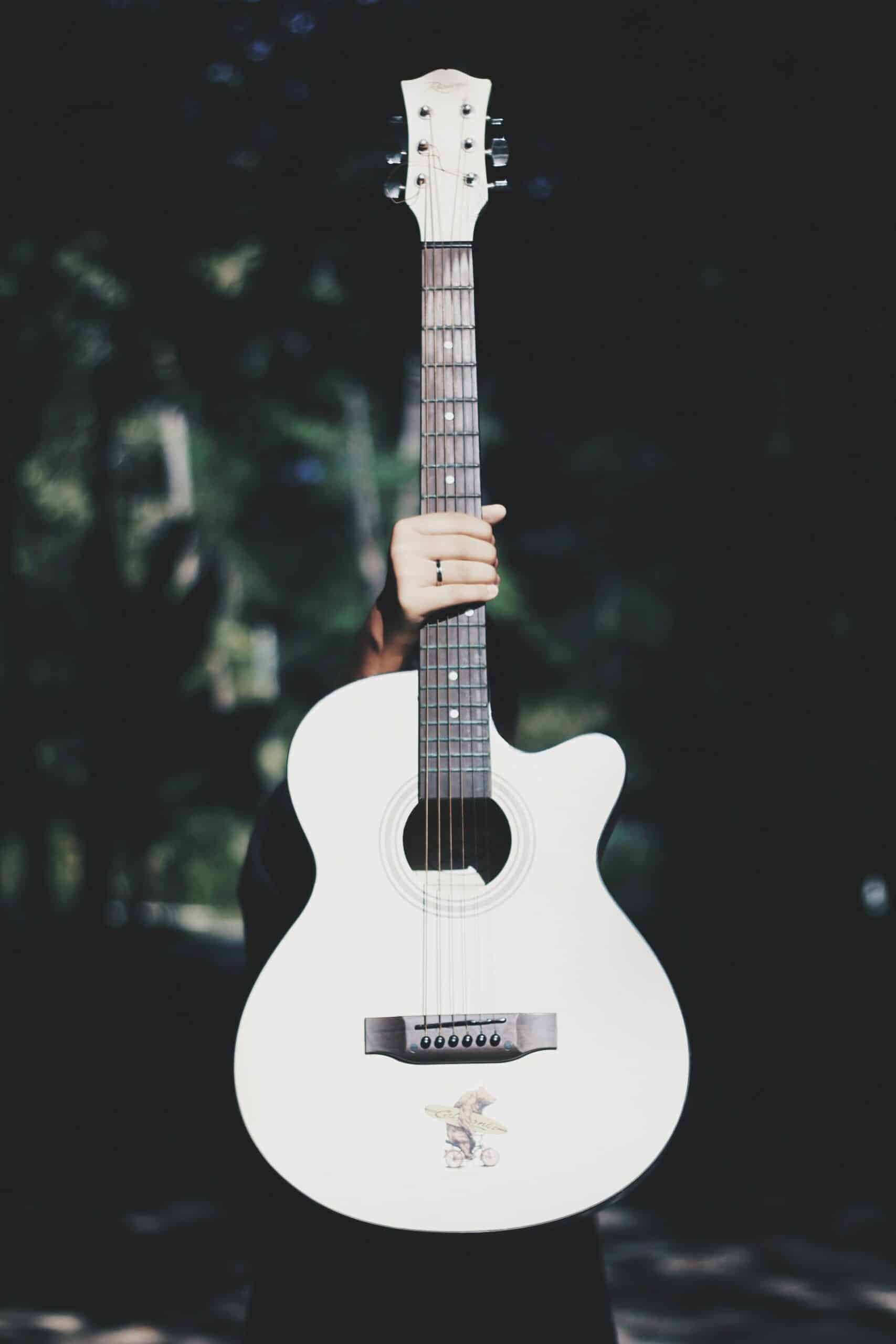
Some folks get the blues shuffle quicker than others. Whatever your case, make sure you stick with it until it feels natural.
As you probably know, the blues is the foundation for many types of music including rock and jazz. Therefore it’s essential to be able to play a shuffle and a 12 bar blues. Remember to have fun!



